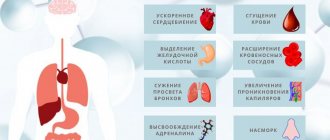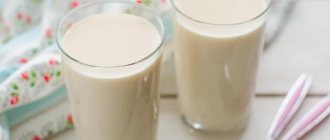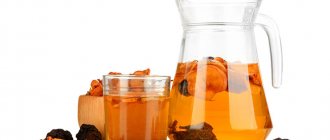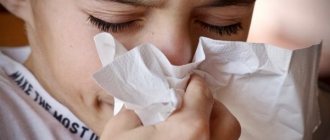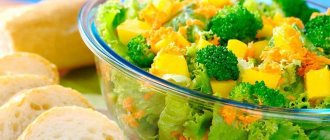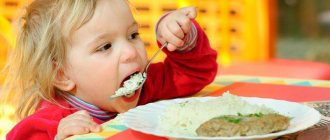Medical editor: Zemereva N.Yu., physiotherapist
Biliary dyskinesia (BDSD) is said to occur when the tone of the bile ducts decreases, resulting in disruption of the outflow and circulation of bile.
A distinction is made between dyskinesia of the hyperkinetic type (increased tone of the gallbladder) and dyskinesia of the hypotonic type (weakened tone of the gallbladder).
The causes of JVP are:
- poor nutrition with irregular eating patterns;
- liver and gallbladder diseases;
- alcohol abuse.
Principles of nutrition
A diet for gallbladder dyskinesia will be effective if you follow the following nutritional principles:
- Nutrition should be balanced. Its peculiarity is the limitation of fats and empty carbohydrates, enrichment of the diet with protein. Approximate daily intake for an adult:
- Proteins – 75-86 g (of which more than half should be of animal origin);
- Fats – 70-79 g (1/3 – vegetable);
- Carbohydrates – 300 g (maximum useful);
- Sugar – as little as possible. The energy value of the daily menu should not exceed 2400 kcal.
- Fasting is unacceptable. If you are forced to take a long break between meals, you should take care of the right snack (foods with a mild effect on the organs of the gastrointestinal tract are used. For example, low-fat fermented milk products: kefir or yogurt);
- Meals are eaten in small portions 5-6 times a day. It is important to follow a routine (eating at the same time every day). Portions should not be large. Overeating puts increased stress on the digestive system, which provokes a large release of bile. It stagnates, an exacerbation phase begins;
- Exclusion of prohibited products from the menu. Even the slightest relaxation can lead to an exacerbation of the disease. Fried, salty, spicy and fatty foods are excluded for ADHD;
- All food is prepared by steaming, boiling or baking. With such technologies, products retain their beneficial properties and are free of carcinogens. When serving, you should carefully observe the temperature of the dish. It is served only warm. It is absolutely forbidden to eat hot or cold;
- In the acute phase of the disease when preparing food, products are rubbed through a sieve for better absorption;
- Foods rich in fiber come first in the diet of a patient with ADHD. It helps the body easily digest food and stimulates the proper functioning of the digestive organs. You need to eat about half a kilogram of foods rich in this substance per day;
- Fruit juices allowed in the diet of adults with biliary dyskinesia are diluted with water in a 1:1 ratio. This makes them easier to digest;
- The last daily meal is taken 1 hour before bedtime. The product consumed should not irritate the digestive organs. A banana or low-fat fermented milk product is perfect.
General rules
Bile is constantly secreted by the liver and accumulates in the gallbladder between meals.
Its entry into the intestines after eating depends on the coordinated work of the entire organs of the biliary system: the hepatic ducts (right and left), the common hepatic duct, the gallbladder, the cystic duct and the common bile duct, which opens into the duodenum through the papilla of Vater (in the thickness of it There is the sphincter of Oddi, which regulates the flow of bile into the intestines). This sphincter, in turn, consists of three sphincters. The task of the sphincter apparatus is to regulate the flow of bile into the duodenum. Such a complex biliary pathway ensures the passage of bile and takes part in the formation of its composition, because the mucous membrane absorbs water, chlorides, bicarbonates, etc. A strong stimulator of bladder contraction is food intake. When it enters the duodenum, cholecystokinin , which regulates the contraction of the gallbladder. The time of its reduction depends on the composition of the food - rich and fatty foods cause a prolonged contraction until the stomach is emptied. When eating low-fat foods and in small quantities, the reduction is short-term. After contraction, the tone decreases and a period of bile filling begins.
With biliary dyskinesia (BDSD), unsynchronous, excessive or insufficient contraction of the gallbladder, ducts and duct sphincters occurs. There are two types of disorders: hypertensive (with an increase in the tone of the bladder and sphincters and a sharp release of bile) and hypotonic (with a decrease in the tone of the sphincters and a sluggish outflow of bile from the bladder). These conditions are regulated by the autonomic nervous system and can be caused by nervous experiences, hormonal disorders, diseases of the gastrointestinal tract and nutritional disorders (constant consumption of fatty and spicy foods, excessive breaks between meals).
With hypotonic dyskinesia, stagnation of bile occurs in the gallbladder and insufficient flow into the digestive tract. Stagnation of bile can cause an inflammatory process in the gallbladder and be a prerequisite for the formation of stones, because the process of thickening of bile occurs in the bladder, and it becomes more saturated with cholesterol . A patient with this disorder is bothered by constant aching pain in the right hypochondrium, which can intensify or weaken. Nausea and vomiting, constipation , bitterness in the mouth, weakness and fatigue are also noted.
With the hypertensive type of dyskinesia, patients are bothered by acute paroxysmal pain in the right hypochondrium (during physical activity, running), periodic loose stools, nausea, vomiting with bile, and lack of appetite. Such patients are characterized by irritability, headache , increased fatigue, tachycardia , and sweating. Since dyskinesias are functional disorders, a balanced diet contributes to their correction.
The diet for biliary dyskinesia and liver diseases is based on the same principles, so the main table is Table No. 5 , with the introduction of different products taking into account the type of dyskinesia.
Basic principles of nutrition:
- The amount of refractory fats (lamb, pork, beef, goose, duck) is limited, which are difficult to digest and also increase fatty hepatosis. Butter is allowed from animal fats; it is better absorbed and is a source of retinol and arachidonic acid.
- The amount of protein corresponds to the physiological norm (100 g).
- Contains lipotropic products (cottage cheese, egg whites, fish, lean meat).
- Food is cooked in water (steam) and baked; frying is excluded.
- Food is crushed for hypertensive dyskinesia and grinding is not necessary for hypotonic dyskinesia.
- Fractional meals (up to 5-6 times).
- Salt is limited to 8 g.
- Liquid up to 1.5–2 l.
Calorie content must correspond to human energy expenditure. A diet with low energy value leads to fatty infiltration of the liver, cell death with the development of connective tissue.
Extractive substances (broths), cholesterol-containing products, spices, and whole milk are limited. Fast food, chips, salted nuts, sparkling water, smoked meats, and sausages are excluded.
In case of hypotonic dyskinesia of the biliary tract and after cholecystectomy in the presence of bile stagnation syndrome, it is necessary to stimulate the biliary system with choleretic products. For this disorder, a variation of Diet No. 5 - Table No. 5 L/F (lipotropic fat). Since in this pathology it is necessary to stimulate bile secretion, improve bile circulation and the motor function of the bladder and intestines, the diet contains a high content of fats, mainly vegetable, and fiber (vegetables, fruits, wheat bran), which have a choleretic effect.
, easily digestible carbohydrates (sugar, honey, sweets, preserves, jams, sweet pastries), which contribute to bile stagnation, are limited or excluded (in case of obesity In general, this is a complete diet with a physiological protein content, enriched with lipotropic substances that prevent fatty liver degeneration ( fatty hepatosis ).
For biliary dyskinesia in adults of the hypotonic type, the diet should include as many foods as possible with a choleretic effect:
- Vegetable oils should make up 50% of the total fat. They are involved in the synthesis of prostaglandins , which dilute bile and enhance contraction of the gallbladder. It is important to consume vegetable oils without heat treatment (for dressing salads, ready-made cereals and soups).
- Almost all vegetables, fruits and berries stimulate bile secretion and also relieve constipation . This point is important, since daily bowel movements have a tonic effect on the bile ducts. The most pronounced effect is found in oranges, avocados, tangerines, melons, watermelons, prunes, pears, lemons, and among vegetables - pumpkin, dill, rhubarb, spinach.
- Juices - cabbage, beetroot, lingonberry.
- Wheat bran (30 g per day). They are steamed with boiling water and, once swollen, added to all dishes, 2 tablespoons three times a day. Bran improves the flow of bile and reduces the likelihood of stone formation, since it reduces the cholesterol content in bile.
- Egg yolks.
- Frequent and small meals are important - this improves the flow of bile, and it is also advisable to expand physical activity.
For dyskinesia of the gallbladder of the hypertensive type, Diet No. 5 , but with a reduction in the total amount of fat to 60 g, a decrease in the amount of vegetable oils (up to exclusion) and fiber. Slightly increase the amount of simple carbohydrates. Diet No. 5Sh can also be considered as a nutrition option . It provides maximum sparing of the liver and other gastrointestinal organs and reduces the intensity of bile secretion. Characterized by a reduced amount of fat, with the exception of products containing cholesterol , extractives (broths) and coarse fiber (radish, radish, bran, garlic, mushrooms, cucumbers, onions, sweet peppers). In the diet of such patients, raw vegetables and fruits should be excluded - only baked or stewed ones can be consumed.
Meals include:
- soups, pureed vegetables, broths are excluded;
- lean meat and fish (preferably chopped);
- eggs are limited to one per day (whites only);
- milk, low-fat unleavened cottage cheese;
- baked and stewed vegetables (potatoes, zucchini, cauliflower, pumpkin, carrots);
- ripe, sweet fruits and berries in the form of compotes, mousses, jellies and pureed fruits;
- fruit and berry juices.
For all types of dyskinesia and symptoms of irritability and neurosis, an increased content of magnesium in the diet is indicated and a magnesium diet can be used. It reduces muscle spasm, reduces excitability and has an analgesic effect. The diet contains wholemeal bread, buckwheat and millet cereals, bran decoction, vegetables and fruits, dried fruits.
Intestinal dyskinesia (or spastic colitis ) is also a functional disorder that is manifested by pain, flatulence , changes in stool and abdominal discomfort. The motor function of the large intestine is most often impaired, and at the same time, spastic or atonic states are noted in its different parts, but no organic changes are detected. The main cause of intestinal dyskinesia is stress (chronic or acute) and symptoms of the disease may appear several weeks after it. In addition to gastroenterological complaints, the patient has neurotic disorders (anxiety, nervousness , worsening mood, depressive states , decreased performance). constipation occurs , less often it alternates with diarrhea .
Treatment depends on the form of intestinal dyskinesia: laxatives, motor stimulants, antispasmodics (for constipation) and absorbent, astringent, enveloping agents (for diarrhea) against the background of sedatives and tranquilizers. Relieving anxiety may require the participation of a psychologist.
Much attention is paid to nutrition and food intake.
- Small meals - it is important not to overeat and not overload the intestines.
- Boiled and baked dishes.
- Rye bread.
- Daily consumption of fermented milk products.
- Porridges cooked in water (any kind, exclude rice for constipation).
- Limit (exclude) baked goods, flour products, spices, smoked meats, fatty meats and fish, and spicy dishes.
- Quitting alcohol.
- Exclude turnips, radishes, radishes, garlic, mushrooms.
For constipation, the introduction of products that stimulate bowel movements is justified. Diet No. 3 may be effective in this case . This is a complete diet that you can stick to constantly. It includes foods that enhance intestinal motility (vegetables, fruits, baked goods with bran, cereals, fermented milk drinks, bran, prunes, fiber, beets, honey).
Products that increase fermentation and rotting (fried foods, legumes, simple carbohydrates, fatty foods) are excluded. On an empty stomach, it is recommended to drink water with honey, juices, and at night - kefir, infusions of dried fruits (prunes, dried apricots) and then eat steamed fruit or simply eat a portion of fresh fruit. It is necessary to exclude foods that delay bowel movements: chocolate, dogwood, jelly, cocoa, strong tea, lingonberries, black coffee, pomegranate, blueberries, pears, pasta, red wine, delicate cheeses.
Prohibited Products
Products that are prohibited during an exacerbation of the disease and that are not included in the diet menu unnecessarily burden the patient’s body. They provoke an exacerbation, causing unpleasant symptoms. People suffering from this feature should know what they should not eat if they have biliary dyskinesia:
- Fast food: dry food, chips, seasoned crackers, salted nuts;
- Desserts with a high sugar content: cakes, ice cream, cookies with sweet filling;
- Carbonated drinks, especially with dyes and preservatives (medicinal mineral water of medium carbonation is allowed);
- Cocoa and coffee;
- Fatty primary broths from any meat, cooled “hot” dishes;
- Fats in their pure form: lard, lard;
- Smoked sausages, fatty fish;
- Pickles, spices;
- Bean products (cause increased gas formation, bloating);
- Mushrooms (hard to digest), fresh onions and garlic;
- Brown bread (allowed to be eaten dried);
- Spicy seasonings, mustard, pepper;
- Alcoholic drinks of any strength (the load on the liver greatly increases, spasms of the smooth muscles of the gallbladder occur).
With the complete exclusion of these products, treatment is more effective and symptoms disappear in a short time.
Summary for parents
VSD is a fairly common pathology among children. Dietary nutrition, even without drug treatment, can normalize the function of the entire biliary system in the child’s body.
After just a couple of weeks of following the diet, the child’s well-being will improve, and then the symptoms of the disease will gradually disappear. It is only important to accurately determine the type of dyskinesia and follow the diet correctly, following the doctor’s instructions.
Pediatrician E. O. Komarovsky talks about problems with the gallbladder in children, including GIB:
A pediatrician talks about DVT:
Biliary dyskinesia (BD) causes many unpleasant problems: bloating, dyspepsia, soreness, nausea and a bitter taste of bile in the mouth. It is treated with medications, proper diet, and adherence to a special therapeutic diet. Dyskinesia is a functional disorder that impairs the process of digesting food. There are hypertonic and hypotonic forms of the process. Nutrition for biliary dyskinesia is adjusted depending on the type of disorder.
Recommended food
People suffering from this disease should know what they can eat if they have biliary dyskinesia. Allowed foods:
- First courses are soups made with vegetable broth or vegetable oil. Outside the acute phase, it is allowed to use secondary broths from dietary meat;
- Dietary poultry, fish (low-fat varieties) boiled, steamed or stewed;
- Cereals (buckwheat, pearl barley, rice), durum pasta;
- Fermented milk products with reduced fat content;
- Bran, whole grain bread;
- Boiled eggs (or steamed omelet);
- Vegetable oil (1-2 tbsp per day);
- Wheat crackers, dried rye bread (preferably made from whole grain flour);
- Sweet varieties of ripe fruits, berries, citrus fruits;
- Jam, jam, honey (in moderation);
- Unsweetened tea with lemon, dried fruit compote, juice (diluted with water to reduce concentration).
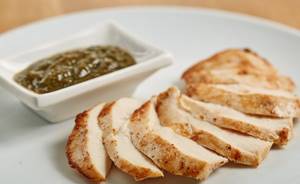
With such a diet, it is important to comply with the daily calorie intake (for people who are not overweight).
With a prescribed diet at the time of exacerbation of dyskinesia, medicinal drinks are prescribed. They are a complement to dietary nutrition.
- Mineral waters (for example, Essentuki-17). Take 30 minutes before meals, pre-infuse until gas is completely released. They help speed up metabolism, stimulate the proper functioning of the gastrointestinal tract;
- Freshly squeezed vegetable and fruit juices, diluted with water, have a general strengthening effect due to their high content of vitamins and microelements. Drink them half an hour after meals;
- Herbal teas belong to folk medicine and are often prescribed as an adjuvant therapy (they are recommended only by the attending physician). A collection of dry nettle leaves, rose hips, and currant leaves stimulates intestinal motility, accelerates metabolism, and has a beneficial effect on the body as a whole.

Selection of products for diarrhea
Consumption of foods containing many lipotropic substances increases the fluidity of bile, and the content of oxalic acid or cholesterol leads to thickening and promotes stone formation. Purine bases impair metabolism. It is allowed to drink mineral water, but it must be non-carbonated. If there is no exacerbation, you can eat honey (a little).
What you can eat:
- Porridge, cereals.
- Starchy vegetables, fresh herbs.
- Baked or boiled fruits, diluted fruit juices.
- Boiled meat, fish (necessarily low-fat varieties).
- Vegetable soups (meat broth cannot be used).
- Jam, marmalade, marshmallows, marshmallows.
- Rye or wheat bread. Fresh ones need to be dried or left to sit for a day.
- Vegetable oils.

What to limit in your diet:
- Semolina, rice cereals.
- Sugar (within 30 grams per day).
- Eggs (no more than 3 per week).
What not to eat:
- Fried, fatty, spicy.
- Smoked, canned food, marinades, pickles.
- Offal.
- Store-bought sauces (ketchup, mayonnaise).
- Carbonated drinks.
- Fast food, sushi, chips.
- Fresh bread, pastries made from butter dough.
- Chocolate, ice cream.
- Fatty lactic acid products.
- Nuts, mushrooms, legumes.
- Garlic, radish, onion, sorrel, radish.
- Instant porridge.
- Chewing gum.

Sample menu for the day
For a better understanding of the principle of nutrition, an approximate daily menu has been developed for biliary dyskinesia in adults:
Breakfast:
- 250 g of cottage cheese with a reduced fat content;
- Unsweetened tea;
- Toasted bread with butter (it’s important not to overdo it!)
Lunch:
- A glass of low-fat kefir;
- 250 g vegetable salad.
Dinner:
- 200 g vegetable soup;
- 100 g boiled chicken meat;
- 150 g buckwheat porridge in water;
- 30 g dried bread.
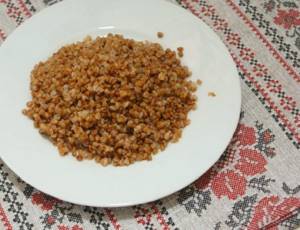
Afternoon snack:
- A glass of low-fat yogurt;
- 20 g croquette cookies.
Dinner:
- 200 g low-fat cottage cheese;
- 1 boiled egg;
- Tea with lemon.
Second dinner:
- 1 banana.
Vegetables and fruits are included to diversify the diet. Cereals are combined.
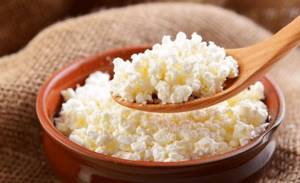
Biliary dyskinesia – what is it?
Biliary dyskinesia (BD) occurs in 30% of people, most of whom have no idea what kind of disease it is. Although the disease is not life-threatening, it is important to properly diagnose the symptoms. JVP is dangerous due to complications that will certainly arise if it is not treated.
The essence of the disease lies in the improper outflow of bile through special ducts. Its main function is the breakdown of fats. If this process is disrupted, the body lacks carbohydrates and fatty acids. Depending on the speed of entry into the intestines, hypo- and hyperkinetic dyskinesia are distinguished.
- Pathological defects of the gallbladder (weak wall, septum or bend, increased number of ducts, bladder mobility).
- Ulcer, gastritis, cholecystitis.
- Appendicitis.
- Viral hepatitis.
- Various inflammations.
- Menopause.
- Food allergies.
- Giardiasis and worms.
- Wrong diet.
- Strict and long-term mono-diets.
- Alcohol abuse.
- Stress.
Diet features
If hyperkinetic type dyskinesia is diagnosed, the diet will have its own characteristics. The goal is to block the increased secretion of bile. The diet will include all of the above products except vegetable and animal fats. Dairy products with a fat content higher than average are strictly prohibited. This applies to cottage cheese and butter.
It is also better to exclude vegetable fats. Soups should be prepared only with vegetable broths. Adding vegetable oil or secondary meat broth can cause a return of unpleasant symptoms and ineffective treatment.
It is important to maintain a drinking regime. The amount of fluid consumed should reach 2 – 2.5 liters per day. This will help rid the body of toxins and promote rapid digestion of food.
With hypokinetic type GIB, the doctor’s task is to prescribe a diet that includes foods that can increase bile production.

These include milk fats contained in butter, cottage cheese, yogurt, sour cream, and cream. It's important not to overdo it. Too much fat will not benefit the body.
First courses are prepared with the addition of vegetable oils. It is allowed to use secondary meat broths.
Maintaining water balance will have a beneficial effect on the treatment of any type of disease.
Important! If you follow a diet, you need to get adequate sleep and avoid nervous overload. Hypotonic dyskinesia is associated with nervous overexcitation, which can provoke an exacerbation.
Moderate physical activity, maintaining a healthy lifestyle, diet and lack of stress will lead to the fading of unwanted symptoms.
Nutrition of a child with ADHD
ADHD is diagnosed not only in adults, but also in adolescents or preschool children. The symptoms of the disease are no different from their manifestations in adults. If a child is diagnosed with this and a diet is prescribed, it is necessary to have an explanatory conversation, talking about the need to follow the doctor’s recommendations.
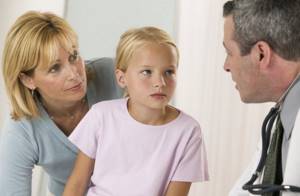
The diet for biliary dyskinesia in a child prohibits sweets, with the exception of honey, jam and curd desserts.
List of permitted products:
- Vegetable soups (without adding meat broth), vegetable salads;
- Cutlets from lean poultry and fish, steamed or baked in the oven;
- Boiled white poultry meat;
- Meatballs, dumplings;
- Porridge (milk and water) made from buckwheat or rice;
- Pasta from durum varieties (addition - vegetables);
- Dietary desserts made from low-fat cottage cheese (casseroles, soufflés, mousses);
- Fruit desserts from fresh fruits and berries (smoothies, fruit purees);
- Omelettes in a steam bath;
- Dried wheat bread or rye crackers;
- Jams, jams (in moderation);
- Juices diluted with water, weak teas, jelly;
- Vegetables, fruits, berries, dried fruits.
Meals should be fractional (small portions every 3 hours). Hunger is unacceptable. It is important to maintain water regime and moderate physical activity.
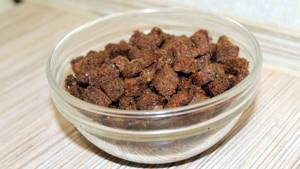
Dish recipes
Patients diagnosed with dyskinesia can eat vegetables, fish and meat baked in the oven or stewed in their own juice.
Lenten vegetarian soup (2 servings):
- Required ingredients: carrots (1 pc.), potatoes (1 pc.), pearl barley (30 g).
- Vegetables are rinsed, peeled and chopped, cut into small pieces.
- Vegetable broth (1.5 l) is poured into the pan, boiled and pre-washed barley is added.

- After the water boils under the pan, reduce the heat and cook the cereal for 45-50 minutes.
- To make pearl barley cook faster, you can pre-soak it for half an hour in warm water.
- After the cereal is cooked until half cooked, carrots and potatoes are added to the soup.
- The first dish is simmered over low heat for another 15 minutes. Salt and remove the pan from the heat. The soup can be served with herbs.
Baked fish:
- Pike or pike perch fillet (150 g) is washed in cold water and lightly salted.
- The fish is wrapped in foil and baked in the oven at 180° C for 30-45 minutes.
- To prevent the fillet from being dry, you can brush it with olive oil.
- A side dish of cereals and vegetables will be prepared for the fish: potatoes and carrots are stewed in their own juice without adding oil.
- Rice or pearl barley is boiled in unsalted water until tender.
Boiled beef:
- Lean beef fillet (150 g) is washed under running water and thrown into boiling water.
- After the meat has boiled, the broth is drained, the fillet is washed, and placed in boiling unsalted water.
- The meat is boiled until done.
- You can serve the dish with mashed potatoes or any other side dish.
Curd and fruit casserole:
- Low-fat cottage cheese (100 g), honey (1 tablespoon) are mixed in one container.
- Banana (1 piece) is peeled and cut into small slices.
- The cottage cheese is placed in a fireproof form.
- Banana slices are placed on top of the curd and honey mixture.
- Cover the pan with foil and place in the oven preheated to 150°C for 30 minutes.
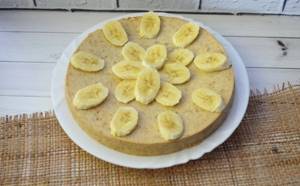
Vegetable salads are prepared in the standard way. Gastroenterologists recommend pre-boiling vegetables in unsalted water. You can use olive oil as a dressing.
Diet during an exacerbation
A person with a confirmed diagnosis of dyskinesia will have to deal with phases of exacerbation and improvement. Exacerbation can be facilitated by stress, physical overload, fatigue, and weakness of the body during an outbreak of viral diseases.
During an exacerbation, the diet excludes many permitted foods, which are introduced as the symptoms weaken.
During the period of increasing unpleasant symptoms in the form of disorders of the digestive system, it is necessary to endure 1-2 days without eating. In this case, the volume of liquid is increased to 3 liters per day. It is allowed to drink weak teas with the addition of healthy herbal decoctions, dried fruit compotes, juices diluted with boiled or filtered water.
Drinks should be at room temperature for easy digestion.

Next, the diet includes pureed porridges and soups with vegetable broth, boiled vegetables (for a period of 4-5 days). Every day new products are introduced, a transition is made to Diet No. 5, which should be maintained for a long time.
Quitting the diet
After a long diet, the symptoms of dyskinesia disappear. It takes a lot of time to return to your usual diet. Each product is introduced into the menu of a recovered person gradually. It is important to carefully monitor the reaction of the digestive system.
First, dairy products are introduced with a gradual increase in the percentage of fat content (up to average), then different types of cereals and lean meats.
Sweet baked goods and sweets are introduced last, if the body has taken all the necessary products. It is better to avoid fatty, spicy and salty foods forever. These products do not benefit the body and may contribute to the return of symptoms.

Causes of JVP
The reasons for the development of ADHD in children can be different:
- The function of the biliary system is regulated by the autonomic nervous system, so neurological pathology is one of the possible causes of dyskinesia. A stressful situation in children can cause a violation of bile secretion, that is, dyskinesia.
- Hormonal imbalances, therefore, JVP are often observed in adolescents.
- Poor nutrition (abuse of spicy and fatty foods, dry food, fast food, long intervals between meals).
- Pathology of the digestive organs.
- Helminthic infestations.
- Congenital changes in the gallbladder.
- Constant physical exertion that is inadequate.
- Infections.
Consequences of non-compliance
Gallbladder dyskinesia is not a dangerous disease, but serves as a predisposing factor for the formation of more serious diseases. The organs of the gastrointestinal tract are vulnerable, intestinal microflora and metabolic processes are disrupted. This leads to the development of the following conditions:
- Gastritis, ulcerative lesions of the stomach and duodenum;
- Pancreatitis and other pancreatic disorders, enzyme deficiency;
- Cholecystitis;
- Formation of gallstones;
- Atopic dermatitis and other skin manifestations (the condition of the digestive system is reflected on the skin).
Failure to follow the diet will lead to useless medications. 90 percent of the treatment for biliary dyskinesia is proper nutrition.

Characteristics of diet for dyskinesia
The JVP diet is aimed at improving the character and diet, restoring the tone of the bile ducts. Diet therapy plays a major role in the treatment of dyskinesia. To reduce the load on the pipes, sphincters and the gallbladder itself, exclude from the diet:
- cold dishes;
- difficult to digest fats;
- extractive dishes (rich broths);
- coarse fiber vegetables.
The diet reduces the severity of gastrointestinal dyskinesia, increases bile secretion and secretory activity of the liver. Proper nutrition solves several problems at once:
- reduces body weight;
- restores metabolism;
- prevents gas formation;
- normalizes stool;
- serum cholesterol levels decrease.
Failure to comply with the diet for intestinal dyskinesia is fraught with uncertain consequences - cholangitis, estimated cholecystitis, pancreatitis, atypical eczema.
